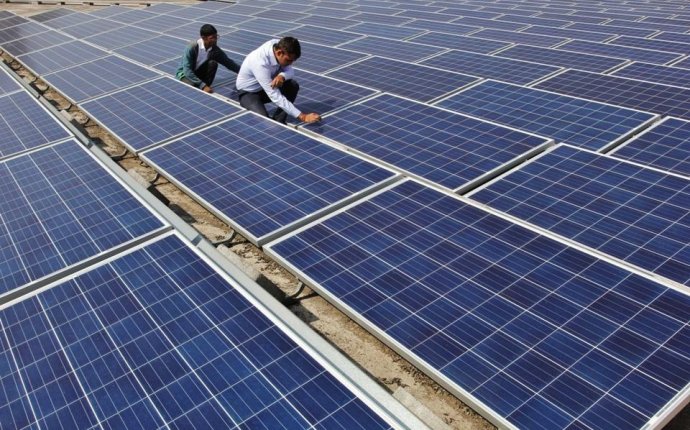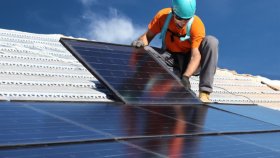
Get solar panels Installed
 By
By
By Justin Lonson
Want to generate clean energy and pay less to your local power company? Installing solar panels is a smart move. To be sure you’re really doing the right thing for your pocketbook, though, you have to examine all the costs associated with solar panels and weigh them against potential long-term savings. Installation costs are just part of the story. [Full disclosure: this post has been generously sponsored by RC Energy Solutions.]
Before you commit to working with any particular solar company, be sure you get answers to these five questions so you can accurately assess your total costs.
1. Does my roof need to be repaired or replaced?
Solar panels typically have a life span of at least 20 years. A roof, on the other hand, might last anywhere from 15 to 30 years. It’s costly and inconvenient to remove the solar panels if you need to repair your roof. So, before you install solar panels, you’ll need to make sure that the solar panel system won’t outlive your roof. That’s why a professional roof inspection is essential. Even if you think your roof is sound, it might not withstand the solar panel installation process. You’ll have a lot of people up there walking around and adding heavy panels. By conducting a roof inspection in advance, you can learn about any possible weak spots now so you won’t be surprised by leaks later.
If your roof is more than 12 years old, you may want to look into a combo package that would give you a brand-new roof and solar panels at the same time. An energy-efficient roof can save you up to $20, 000 over 30 years. Combine that with the savings you’ll realize from solar panels, and the initial outlay of cash becomes a very smart investment.
2. Should I buy or lease my solar panel system?
Many customers choose to lease their solar panels because the upfront costs seem lower. Unfortunately, most solar leases are designed to work in favor of the installation company, not the customer.
Choosing a solar lease means you might pay a little less at the start, but you won’t get to take advantage of the Solar Investment Tax Credit, which provides a dollar-for-dollar tax credit of 30 percent of the amount you paid for your system.
Also, if you need to sell your home during the solar lease period, you could terminate the lease early, but that might cost you up to $20, 000. Solar companies will tell you that you can transfer the lease to the new owner, but the buyer will have to qualify to take over the payments. That can be tough if the buyer is already stretching to qualify for a home loan. Homes with leased solar panel systems often spend more time on the market. And while buyers do pay a premium for solar, that only applies to systems that have been purchased outright. Homeowners with leased systems may actually have to lower the selling price to entice a new buyer.
If you want to keep your installation costs as low as possible, consider examining various financing options, like PACE financing or a dedicated solar loan.
3. How much power should my solar panels generate?
Before you move forward with solar panel installation, you need to assess how much energy you use now and how much you’re likely to use in the future. An expert installer can help you with the process. Professional guidance is important, because the size of your solar panel system, and how efficiently it runs, can greatly affect your total costs.
According to California Solar Statistics, systems under 10 kilowatts cost, on average, $5.29 per watt. The typical home system produces 4 kW of power, so we can calculate an average cost of $21, 160. Of course, if you have a very large home or you live in a hot climate where you run your air conditioner day and night to keep your home comfortable, you may need a bigger system.
4. Which solar panels are best for my needs?
Solar technology is constantly improving, and customers have access to a wide range of solar panels. High efficiency panels are a bit pricier upfront, but they can help you save more on your energy costs in the long run. For the best performance, look for panels constructed from monocrystalline silicon, surrounded by amorphous silicon layers. Panels made from polycrystalline silicon may be less expensive to purchase, but they can’t match the efficiency of monocrystalline.
You should also consider your climate when choosing solar panels. When the panels heat up, they can actually become less efficient at producing energy. So, if you live in an area with high summer temperatures, look for solar panels designed to operate efficiently in the heat, like the Panasonic HIT panels. These panels are also designed to absorb more sunlight so they can generate more energy, making them a great choice for areas like San Diego that get lots of sunshine.
5. How can I maximize my long-term savings?
To get the biggest bang for your buck, you have to understand that installation costs don’t tell the whole story. It’s important to understand that with careful planning, you can often recoup all of those upfront costs within the first 10 years of solar usage—and your savings will continue for many years after that.









